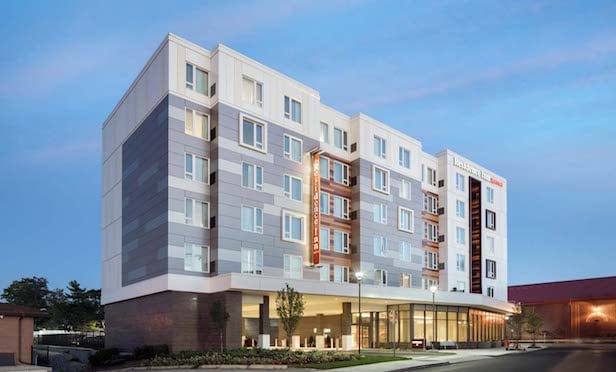CHICAGO—Harrison Street Real Estate Capital's announcement earlier this month that it had closed on a 60-acre mixed-use development in College Station, TX, home of Texas A&M University, is the only the latest in a lengthy series of investments in the student housing sector. The equity for the project, Century Square, a partnership with investment and development firm Midway, came from HSRE's latest opportunity fund, which raised $850 million in less than four months.
Since 2006, HSRE has acquired and funded developments of more than 110 student housing properties at more than 80 universities, equating to more than $4 billion of education-related real estate. It's one of three sectors on which HSRE has focused since being co-founded in 2005 by CEO Christopher Merrill and brothers Christopher and Michael Galvin, the other two being healthcare and storage. GlobeSt.com sat down with Merrill last week to learn how the three sectors fit together, as well as the near- and long-term opportunities he sees.
GlobeSt.com: Harrison Street has been described as the largest private equity firm in the student housing sector, and you're also very active in healthcare and storage. How do they fit into your overall strategy?
Christopher Merrill: When we founded the firm, the concept was to build an investment management firm that targeted asset classes that were less susceptible to volatility associated with the overall economy. We invest 100% in demographic real estate of education, healthcare and storage. People had dabbled in these segments, but there wasn't any firm that had a dedicated focus on asset classes with need-based demand drivers.
GlobeSt.com: Was there also an element of diversifying across these sectors?
Merrill: The idea behind the strategy is that we form commingled funds of properties across these segments. So the idea is not to put all of our capital into student housing, medical or self-storage. What we utilize is all of these asset classes to invest where we believe the right risk-appropriate return is.
The theme of our funds, whether open-ended or close-ended, is to focus on these demographically demand-driven segments. The asset classes have very similar characteristics in terms of fragmentation and being hard to access. At the same time, lenders are very interested in providing financing for these asset classes. Institutions see the benefits of these assets and would like to own them, but the average investment size is smaller, so it's harder to access. There is a very consistent theme across these segments, and that's how we've gone about setting up these funds.
GlobeSt.com: Are there differences in risk/return levels within the funds and in the requirements of some of the different investor groups?
Merrill: We use two different product offerings. One is a closed-end fund strategy where investment returns are more opportunistic, there's more capital appreciation, there's development exposure, lease-up exposure. The returns can vary among the asset classes and among the strategies depending on whether you're developing, buying, etc.
But then we also have an open-ended strategy that allows us to invest in these same asset classes but focus more on income. Where the asset classes are more stabilized, we use lower leverage, thinking more long-term. By having the two buckets of capital, it allows us to investment the spectrum of education, healthcare and storage.
GlobeSt.com: In the current environment, are you more likely to invest via acquisition or development, or is this done on a case-by-case basis?
Merrill: It depends on the strategy. Within our opportunistic funds, typically 30% to 40% might be in development. Within our core fund it's more of a focus on stabilized assets. So in any given year, if we're investing upwards of $3 billion in real estate costs, 20% to 30% of that might be ground-up development.
GlobeSt.com: Since the company was founded, the overall economy has certainly gone through periods of volatility. Would you consider this a testimony to the thinking that went into your strategy?
Merrill: Absolutely. When we look at these asset classes, there's lower volatility: for instance, stronger capital preservation and at the same time a higher overall return. So there's a very attractive arbitrage that's taking place in these segments. You can go back even further and look at the downturn. Medical office outperformed traditional office. Self-storage did better than industrial. Student housing and senior housing did better than multifamily. Nothing is recession-proof, but these asset classes were very resilient because they are need-based.
So what you have is asset classes with good long-term demand, yet because they're hard to access and because of the fragmentation, you can drive better returns. That's what exciting about these investments, because it's not just for a sort period of time. It's really for the next 10 to 15 years, given some of the demographic changes that are happening within our country.
© Touchpoint Markets, All Rights Reserved. Request academic re-use from www.copyright.com. All other uses, submit a request to [email protected]. For more inforrmation visit Asset & Logo Licensing.







